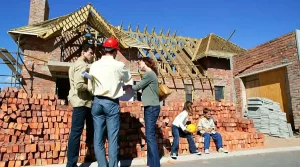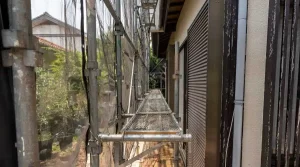In a world grappling with heatwaves, power outages, extreme cold, and droughts, the urgency to prioritize environmental well-being is more evident than ever. The construction industry holds a significant role in mitigating these challenges, and its adoption of sustainable practices is essential for a greener future. In this article, we delve into the three pillars of sustainability—Reduce, Reuse, and Recycle—within the realm of construction. Join us as we explore their applications, benefits, and the crucial role they play in shaping a more responsible and environmentally conscious construction landscape.
The Scope of the Issue
The Environmental Protection Agency (EPA) has scrutinized the magnitude of the construction waste dilemma. Their latest report revealed a staggering 600 million tons of construction and demolition (C&D) debris generated in the United States during 2018. This astonishing volume exceeds twice the municipal waste generated by homes and businesses combined.
Unsurprisingly, a significant portion of this waste originates from demolition activities. Approximately 455 million tons of C&D debris, primarily consisting of aggregate materials, found productive reuse. However, a concerning 145 million tons ended up in landfills.
Despite these challenges, the construction industry is actively advancing toward sustainable solutions, effectively minimizing waste generation, reusing valuable materials, and implementing recycling practices.
The Power of Reduction
One of the cornerstones of sustainable construction lies in waste reduction. The adoption of modular construction methods is a prime example of how efficiency can be maximized while waste is minimized.
Modular construction involves the fabrication of components offsite, adhering to precise specifications with minimal waste. The predictability of this approach, akin to assembly-line manufacturing, allows for efficient installation and improved schedule certainty. This method, accompanied by specialized tools and quality control, paves the way for waste elimination and continuous improvement.
In synergy with this, an industrialized scheduling approach further enhances efficiency. Fewer crews working fewer shifts reduce the environmental impact associated with transportation and machinery usage. The synchronized assembly of subcomponents minimizes construction waste and ensures projects run smoothly.
Recycling: A Circular Approach
Recycling forms the heart of sustainability, offering a circular economy that reduces demand for virgin resources and lessens environmental strain. In construction, the potential for recycling is immense.
Materials like asphalt, concrete, and metals can be recycled into new products, from aggregates to engineered wood and beyond. There are two main recycling approaches: site-separated recycling, where waste is sorted by the builder, and commingled recycling, where everything is placed in a single container for later sorting.
At LK West Valley City General Contractors we advocate for recycling by commingling materials, with the aim of limiting construction material waste to no more than 10%. Our commitment extends to both greenfield and brownfield sites, incorporating demo debris and rock from over-excavation into our processes.
The Significance of Reuse
Retrofits and adaptive reuse are gaining momentum, offering dual benefits of sustainability and cost-effectiveness. Adaptive reuse breathes new life into existing structures, minimizing the need for new materials and aligning with local government incentives for repurposing old buildings. Notably, older structures often feature high-quality materials that are climate-responsive and efficient. The data center industry is a shining example of successful adaptive reuse, transforming abandoned spaces like malls, prisons, and power plants into functional data centers. Beyond the practical benefits, this approach keeps substantial amounts of building materials out of landfills.
Designing for a Sustainable Future
As we march toward sustainability, architects and engineers should champion designs with adaptability and disassembly in mind. Building for the long term, considering future repurposing and reducing waste, is a monumental step forward.
The shift to a circular economy, which prioritizes resource safety and waste elimination, is pivotal. By reimagining existing structures, embracing modular components and schedules, and recycling, our industry can continue its march toward sustainability.
In conclusion, the importance of the three Rs—Reduce, Reuse, and Recycle—in construction cannot be overstated. By adopting these principles, we take a significant stride toward a more sustainable future, where environmental stewardship and responsible resource management guide our practices. As an industry, we must collectively pave the way for a construction landscape that thrives in harmony with the world around us.
At LK West Valley City General Contractor, we are committed to this vision, and we invite you to join us on this journey toward a greener and more sustainable construction paradigm. Contact us today to be a part of this transformative movement.










